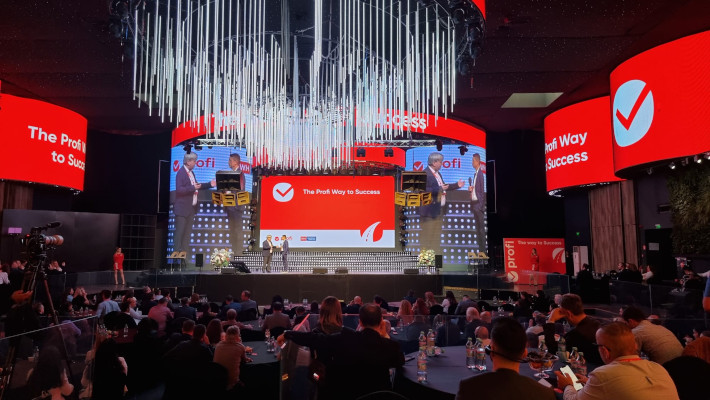By Ng Boon Yian
Asia Times Online (www.atimes.com)
SINGAPORE – As high-tech Samsung phones, sleek LG flat-panel TVs and reliable Hyundai Sonatas make it onto the wish list of the modern consumer, it is clear that Korean brands have come a long way from the not-so-recent past when these very brands were associated with a low-end image and shoddy quality. Yet within less than a decade, these brands have muscled their way into the big league of global names. In the latest Top 100 Brands ranking compiled by BusinessWeek magazine and brand consultancy Interbrand, Samsung surpassed its Japanese rival Sony to take the 20th spot in the list, leaving the latter in 28th. More impressively, Samsung posted a steep 186% gain in brand value over the past five years.
{viewonly=registered,special}The top 10 international brands are Coca-Cola, Microsoft, IBM, GE, Intel, Nokia, Disney, McDonald’s, Toyota and Marlboro, Toyota being the only Asian brand in this elite club.
Hyundai and LG have also displayed their prowess by breaking into the top-100 list for the first time, landing the 84th and 97th spots, respectively. What lies behind the phenomenal success of the reinvention of Korean brands? It’s a story of big ambitions, corporate culture shake-ups, and a laser-sharp focus on design and innovation as well as aggressive marketing and expansion strategies. The rising popularity of Korean pop culture – the so-called "kim chic" – has been another helpful bonus.
Brand as a strategic asset
The remarkable resurgence of Korean brands took place in the aftermath of the Asian financial crisis, which left seemingly indomitable chaebols, such as Samsung and Hyundai severely weakened. Forced to stop becoming a cradle-to-grave employer, Samsung, for instance, had to cut 34% of its workforce and sell or restructure 100 business groups. To revive their sagging fortunes, the companies started to look at brands as a strategic asset and poured resources and savvy into burnishing their brand images – something that many Asian companies still fall behind in, even today.
Leading the way was Samsung, which ruthlessly axed lackluster sub-brands such as Plano, Tantus, Yepp and Wiseview and instead mobilized its resources behind the master brand of Samsung. It also chose to focus on mobile phones as its flagship product initially. The question for Samsung then was how to differentiate their mobile phones in a competitive marketplace. The answer: focus on design as well as research and development (R&D). Not only has the number of design staff been hiked from about 100 to 450 in the last five years or so, top design consultancies such as Palo Alto-based IDEO were also hired to teach the designers the skills behind innovation.
In an industry constantly buffeted by fads and fashions, Samsung approached design beyond just looking at colors and shapes. Its innovation was backed by a commitment to research about consumer trends. This involves questions like: How do consumers interact with their phones? What other functions do they use it for other than making calls? To look into the future of such consumer trends, Samsung even set up an elite CNB (Create New Businesses) group of about 30 people, whose mandate was to explore long-term social and technological trends and dream up new products to meet those emerging needs.
Samsung soon reaped the fruits of its commitment to innovation. From a producer of low-quality rip-offs, it blossomed into a brand whose stylish mobile phones were seen as being in the same league as Nokia and Motorola. Its sales of mobile phones surged to number three in the market.
Both inspired and threatened by Samsung, LG followed the same strategy of focusing on branding and design. In 2004 alone, it upped the size of its design team by 50%. Its design center is set in Kangnam in South Korea, a hip neighborhood with trendy cafes and clubs. LG also spared no efforts in revamping its brand image by selling its high-end goods under the LG name while peddling lower-priced electronics under the name of Zenith, a US brand it bought in 1996. Right now, it, too, is focused on making mobile phones the anchor of its global brand-building campaign, backed by the belief that once consumers have a LG phone in hand, they are more likely to turn to the brand when buying other consumer electronics such as TVs or video recorders.
Being based in Korea may well have given both Samsung and LG an innovative edge in consumer electronics like mobile phones. In this tech-savvy society, the replacement rate for phones is estimated at 6-18 months, as young Koreans adapt new services and technology very quickly. Korea, therefore, becomes an invaluable testbed for innovations before the companies roll them out on the world stage.
The popularity of brands like Samsung and LG may also have been boosted by the image of Korea as a high-tech haven as trend-conscious consumers hanker after the latest and the coolest. In Asian markets, the marketing allure of the made-in-Korea tag was further boosted as Korean pop culture gained fans through its soap operas and bands.
Aggressive expansion abroad
Riding on such popularity, companies from Samsung to Hyundai have certainly pushed their products onto world markets aggressively, allowing them to join the family of global brands. In this regard, the rise of China and India provided opportunities to aid expansion. Hyundai, for instance, has seen surging sales in emerging markets other than the US. The car company even managed to be the top-selling foreign brand in China with a 9.8% market share, overtaking brands like Volkswagen, Ford , GM and Toyota.
Hyundai also saw impressive performance in the US, where it sold 419,000 vehicles in 2004, about 2.5% of national car sales. Part of the reason for this strong showing is due to the company’s focus on quality and reliability, a marked change from the past, when the car became infamous for its shoddy build quality. To win back consumer trust, Hyundai introduced a 10-year 100,000-mile warranty in 1999. The pricing of the cars is competitive and an aggressive promotion strategy was launched in the US whereby seven models – Tucson, Sonata, Accent, Azera, Santa Fe and Elantra – were unveiled in 24 months. Little wonder, therefore, that Hyundai is being increasingly considered by car shoppers in the US.
Samsung is no less savvy in pushing its stylish products worldwide, particularly through shrewd product placements in blockbusters such as Matrix Reloaded and Fantastic Four. Sponsorships of major sporting events like the 2002 World Cup also raised the Korean brand’s global profile, while putting its financial heft behind regional games like the historic India-Pakistan cricket match in 2004 – called the "Samsung Cup" – helped it to penetrate the burgeoning middle class in South Asia.
Taking a leaf from Samsung’s book, LG is undertaking similar promotion strategies, including sponsoring Europe’s grand racing event, the World Touring Car Championship (WTCC). Therefore, despite slumps in the domestic Korean market, companies like Hyundai have been able to surge ahead on the back of robust overseas sales. Hyundai reported a 24% rise in second-quarter net income, thanks to strong sales abroad that helped offset sluggish demand at home as Korean consumers are still restrained by piling debt. Much of Samsung’s sales also come from abroad.
Shake-ups in corporate culture
Yet, without shake-ups in corporate culture, it is hard to imagine such breakthroughs in these Korean companies’ production, marketing and branding strategies. Indeed, the head honchos of Samsung, LG and Hyundai are all respected corporate figures who have managed to overhaul their formerly sluggish organizations with determination and flair.
When Kim Ssang Su, LG chief executive, took over in October 2003, he immediately put his stamp on the corporation by setting high targets and injecting machismo in the work culture. In order to make LG one of the world’s top three home electronics players, Kim mandated that meetings were made earlier and concrete targets of 30% productivity improvements were made for three divisions – mobile phones, digital displays and appliances. In order to boost morale, the top management holed up in a two-day retreat, where they pledged to make LG a world player while downing shots of Korean soju (a distilled spirit) and shouting "global top three" together, according to a BusinessWeek report.
While LG had its eyes on catching up with Samsung, the latter had also revamped its own corporate culture under the transformational leadership of Lee Kun Hee, who was reportedly so upset with the subpar standards of Samsung products in 1995 that he ordered the workers at a plant to smash $50 million of inferior goods and toss them into a bonfire, with a banner before them that read "Quality is My Pride". And the rest is history.
Challenges ahead
The past few years have certainly been bountiful for the Korean star performers. While the growing middle class in Asia will provide greater growth opportunities for these companies, the landscape ahead is not without challenges. These include rising raw material costs and an appreciating won that may make Korean products less competitive. Labor woes in companies such as Hyundai, where unions want a greater say in overseas plant constructions and personnel redeployment, may also stymie the flexibility of corporate responses. Even a trailblazer like Samsung cannot rest on its laurels. Increasingly keen competition could erode the lead that the company has been enjoying in mobile phones. Its mobile phone unit’s second-quarter operating profit has actually dropped to 12%, from 16% a year ago. Therefore, while the progress so far has been impressive, the challenges ahead may slow down the speed with which these Korean companies continue to make forays into the global markets.
Ng Boon Yian is a research associate at the Institute of Southeast Asia Studies, Singapore. The views expressed here are her own, not the institute’s.
(Copyright 2005 Asia Times Online Ltd. All rights reserved.){/viewonly}
{mosloadposition user10}




